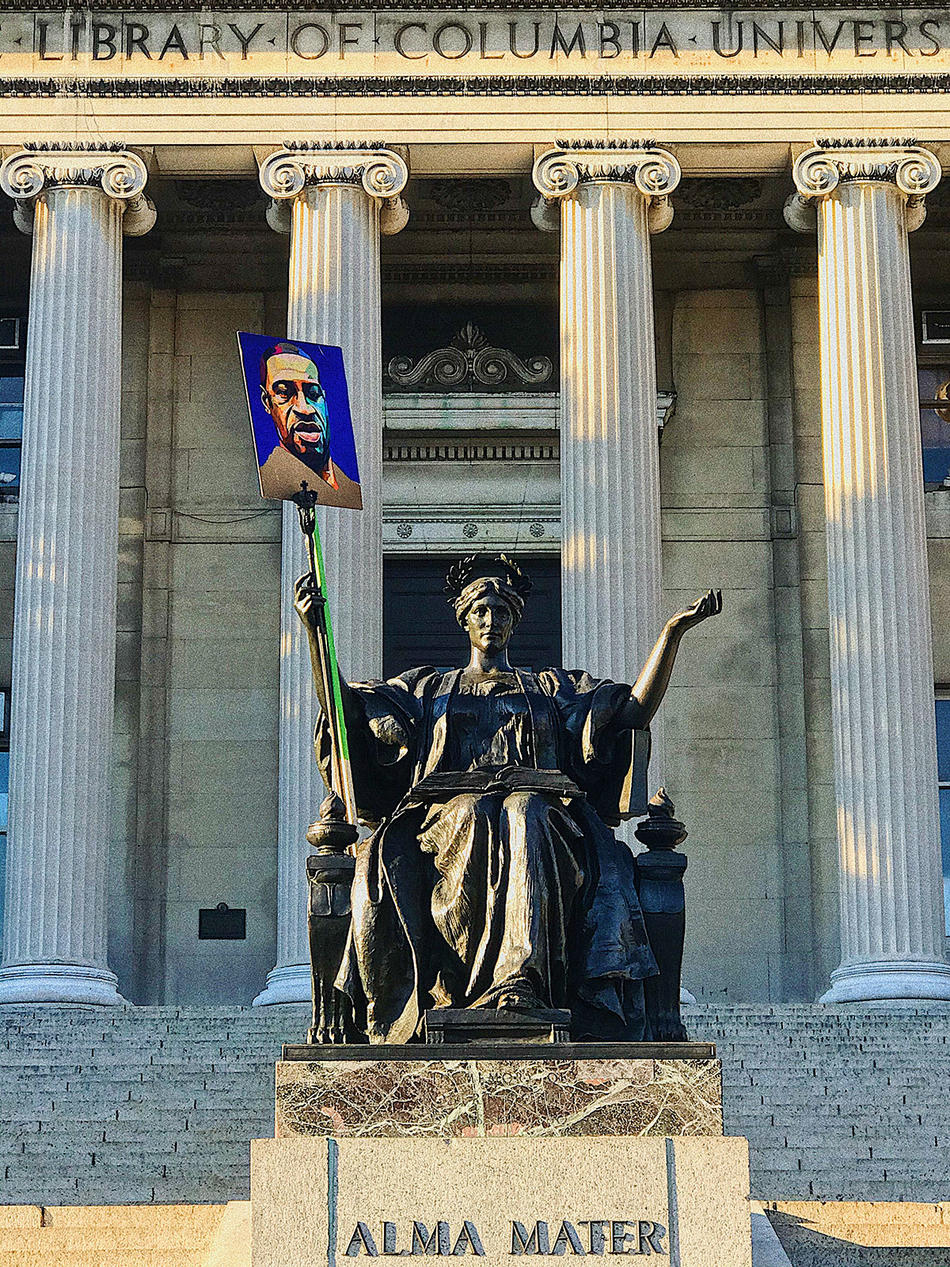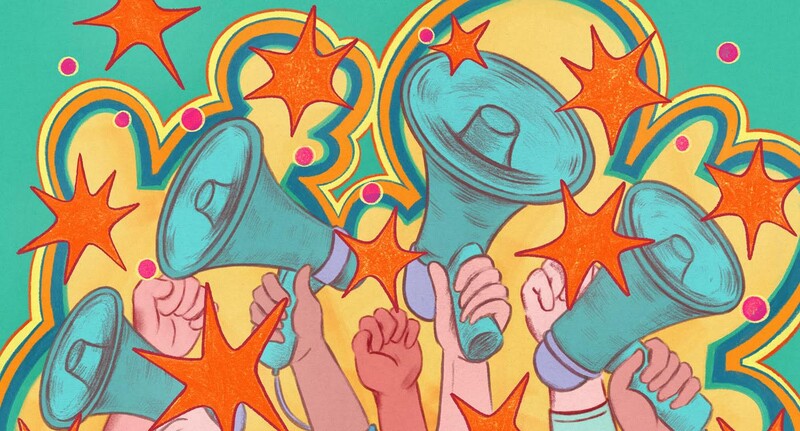Two weeks after the killing of George Floyd, and in the midst of protests decrying police violence against African-Americans — protests that were taking place across the country and around the world — five Black Columbia professors and two administrators gathered online for a virtual panel discussion for the University community. Hosted by Suzanne Goldberg, a law professor and the executive vice president for University Life, and Dennis Mitchell ’97PH, a professor of dental medicine and the vice provost for faculty advancement, the talk was a searching, somber, aching exploration of issues that have recurred so often, and without resolution, that the moderator, journalism professor Jelani Cobb, remarked, “I don’t know how to keep writing about it — at some point you sit down and say, ‘I’ve said everything I can think to say on this subject.’”
Yet in a conversation that lasted more than ninety minutes, centering on what Mitchell called a “centuries-old epidemic of Black deaths at the hands of police and self-appointed vigilantes,” the professors stepped up to address racial injustice and the growing strength of the Black Lives Matter movement.
“I’ve been around long enough to say what I’m seeing is qualitatively different,” observed Robert Fullilove ’84TC, a professor of sociomedical sciences at the Mailman School of Public Health, referring to the thousands of white allies at anti-racism demonstrations. But he also had a grim sense of déjà vu. In June 1964, as an undergraduate at Colgate University and a field secretary for the Student Nonviolent Coordinating Committee, Fullilove was in Mississippi registering Black voters when the KKK and the local police executed three of his colleagues in a case the FBI dubbed “Mississippi Burning”; and in July 1967, after he returned to his hometown of Newark, New Jersey, police brutalized a Black cab driver and “Newark went up in flames,” Fullilove said.
In fact, as Cobb pointed out, most of the major urban uprisings of the past hundred years have been precipitated by police violence: Harlem in 1935, 1943, and 1964; Watts in 1965; Newark and Detroit and Minneapolis in 1967; Miami in 1980; Los Angeles in 1992; Ferguson in 2014; Baltimore in 2015; and, in 2020, the unprecedented nationwide demonstrations sparked by the casual torture and killing of George Floyd. “How,” Cobb asked the panelists, “do you make sense of this professionally?”
Courtney Cogburn, an associate professor of social work, found it puzzling that many white people were outraged over the Floyd murder in particular, given that unjust killings by the authorities are a situation that Black people “have been yelling and screaming about for centuries.” Asked by Cobb if it bothered her that people have been so blind to this reality as to be shocked by Floyd’s death, Cogburn said it was “infuriating” and noted that many have long discounted the significance of racism in the analysis of social problems. “I’m trying to understand what it is about this moment that feels so different to people,” she said. “Is it an accumulation? The sequence of events?”
That sequence includes not only the recent high-profile killings of Floyd, Breonna Taylor, and Ahmaud Arbery but also the devastation that COVID-19 has visited on communities of color. History professor Frank Guridy said the racial disparities laid bare by the pandemic had filled him with a “cocktail of emotions: anger, rage, despair, sadness, and gratitude on the verge of survivor guilt” for the privilege he has, as an academic, “of sheltering in place while Black and brown people are exposed to keep the country going.” Yet despite the ongoing police violence, Guridy has been inspired by the racially diverse street protests, seeing in them “the revitalization of American democracy.”
To find out why policing has been allowed to “go virtually unchecked,” Cobb turned to Olatunde Johnson, a professor of law who spent five years at the NAACP Legal Defense and Educational Fund. Johnson referred to the legal doctrine of qualified immunity, which often shields police from lawsuits for using excessive force in the interest of “letting them do their job,” she said. She connected this to the deeper racist legacy of Southern slave patrols and their influence on police departments. After emancipation, the desire to maintain social control over Black people translated into “deputizing a police force that was essentially operating as the visible branch of the KKK.”
Johnson named some legal changes that local, state, and federal governments have recently made or are considering: banning chokeholds and no-knock warrants; tracking officers who have engaged in misconduct; shifting money from the police to social programs; and amending civil-rights laws to make it easier to hold the police accountable. But real change, said Johnson, will require a wholesale rethinking of public safety.
With the lens trained on policing, and with the NYPD under scrutiny for its treatment of Black and Latino communities, Goldberg took the opportunity to respond to social-media posts that had claimed the University has a contract with the NYPD to monitor its campuses. She said there is no contract between Columbia and the NYPD. Rather, New York State mandates that colleges coordinate investigations of violent felonies or missing students with local law-enforcement agencies, and Columbia has a “memorandum of understanding” with the NYPD that recognizes how the University’s department of public safety will cooperate with the police when required to do so.
In any event, systemic racism in higher education demands a “very honest conversation,” said Cogburn. “It’s clear to me how few people, including those at Columbia, really understand our racial history and the web of racism and the way it functions in our society. That understanding and clarity is critical to any solution.” Fighting for racial equity out in the world is one thing, but it is quite another, she said, to think critically about ourselves — “who we are and how these very same systems function within the University.”
All the panelists expressed optimism that the current protests will lead to changes not just in the criminal-justice system but also in the cultural and historical assumptions that undergird white supremacy. The moment has come, said Fullilove, for a nation “that built its wealth on slavery” to face a reckoning.
“And in the course of that reckoning,” he said, “we’re going to continue, survive, and think of new ways to approach these problems. That’s my hope.”
Sign of the Times
Jon-Matt Hopkins ’20BUS was sitting on the Low Library steps when a man, perhaps coming from a protest, approached Alma Mater carrying a portrait of George Floyd. Hopkins, emotionally jarred by the image, got up to help him put it in the statue’s hand. He then took this photo and posted it on social media. For Hopkins, who is Black, the symbolism is clear: “Being associated with Columbia is inherently a privilege,” he says. “All of us in the University community share a responsibility to use that privilege to illuminate the marginalized.”



